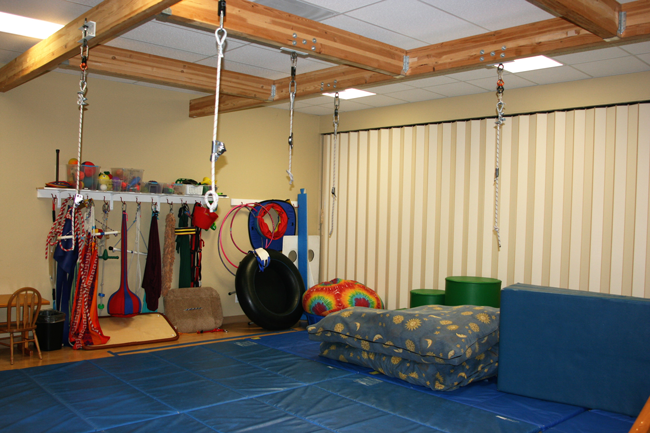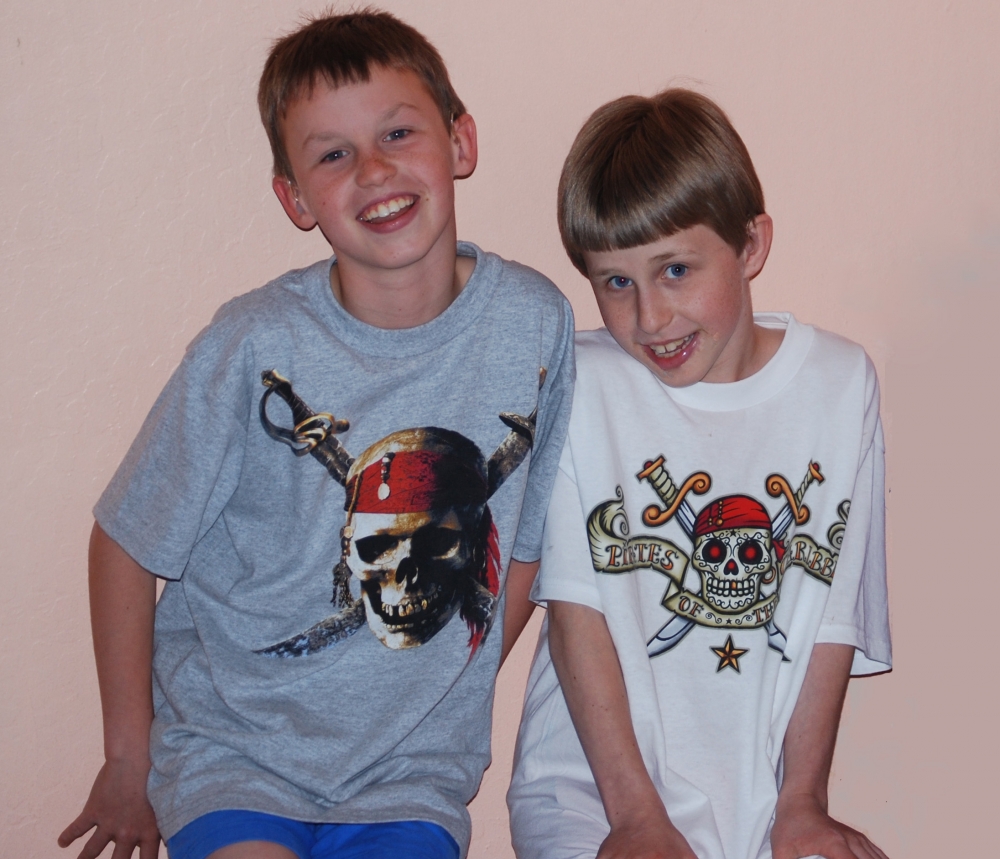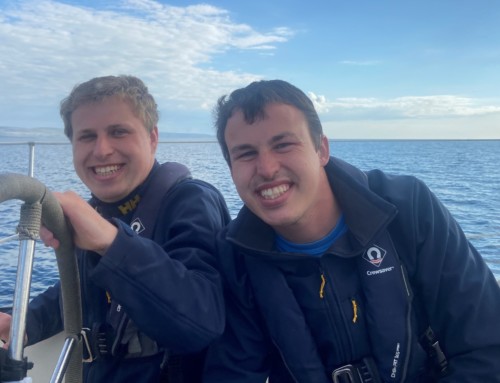Learning readiness: sensory integration and processing
 If your child is everywhere at once and has the concentration span of a goldfish, how can you teach him anything? Our special needs children frequently have difficulty processing sensory information. What this means is that they have difficulties learning from their senses. They are not learning ready.
If your child is everywhere at once and has the concentration span of a goldfish, how can you teach him anything? Our special needs children frequently have difficulty processing sensory information. What this means is that they have difficulties learning from their senses. They are not learning ready.
Learning readiness was a very confusing term to Val and I. For my part, I was curious why our boys always ran everywhere, on their tippy toes. They never, ever walked. They were energizer bunnies and completely unpredictable, disappearing in opposite directions. At school they were known as the runners and had ‘escaped’ from their class on a number of occasions. Then we met Sara Field, a brilliant occupational therapist who had trained with Jean Ayres who pioneered sensory integration therapy.
After several chats about sensory integration with her, I still didn’t get it. So she brought me into her clinic and put me on a spinner and spun me around. After about two revolutions I fell off totally dizzy. Then she put Eoin on the spinner and spun him around. No matter how many times she spun him he never got dizzy, ever. And he loved the spinning sensation, so much so she had to drag him off. Both boys loved any kind of motion but particularly trampolines, swings, slides, climbing and would kill for roller coasters. After spending time in Sara’s clinic the boys were always calm and without a doubt, learning readiness was not an issue.
And then it started to come to me. I couldn’t sit for long before I would need to get up and walk around. I found it really hard to sit and read, but loved audio books while I walked. I started to think about how uncomfortable I felt sitting through long meetings at work and how I was a perennial fidgeter in these situations. This insight was one of the earliest to connect my general approach to communication and that of the boys. It also convinced me that occupational therapy (sensory integration) and later sport would be a vital component to the boys development.
I learned over time from Sara, that the more I could challenge the boys physically and mentally through sport, the more comfortable they would be in their own skins. Once they learned how to bounce on a trampoline, we moved on to forward rolls, backward rolls, ball pools, structured exercises and so forth. What was also particularly positive, was that the boys were collaborating with their peers, taking turns, lining up, learning from each other at Gym class.
The key, as Sara put is, was to keep pushing the boys. Once a skill was learned it was important that the boys were moved on to the next challenge. Over time the boys and I played gymnastics, tennis, swimming, horse riding and sailing. Sports which they ultimately excelled in. And the occupational therapy or sensory integration therapy that we engaged in with Sara was the precursor to all of this. And to bring us back to where we started today, the physical development of the boys fed through to their learning readiness in a most necessary and effect way.
If you would like to learn more about this, keep reading below!
A child’s view of sensory processing
Below is a wonderful video and story from a 10 year old autistic child talking about what it is like to have sensory issues and how he copes with these processing problems. If you were to read one blog on sensory issues, this is it!
Hi my name is Neil and I’m ten years old. I like listening to classical music. I like to read comics. I also like to go to school. Something I know a lot about and want to tell you about is sensory processing disorder. SPD is when the messages that your brain gets from your senses are not organized. So you don’t respond to things like most people do. This makes it hard to do everyday life stuff like getting ready for the day, going to school, playing. You can have SPD by itself or you can have with other things like autism. I have autism and SPD. Everyone has seven sensory systems. They are sound, taste, smell, vision, touch, proprioception, and vestibular.
Under responsive versus over responsive.
You can think of each of your sensory systems as being a cup and the water is a type of sensory input. If you are under responsive from a particular sensory input, it’s like you are a big huge cup. You can keep adding water to the cup, more and more but it never feels full. But if you are over responsive it is like you are a tiny cup. All you need is just a little sensory input and you overflow. You want your cup to be full and not spill over. Each of your sensory systems are their own cup and they are different sizes. Just because you have one big cup does not mean you are under responsive with all your senses. I have a big cup for my proprioceptive and vestibular senses and a little cup for my touch, taste and smell senses. Everyone is different and unique. Some days and times of days are good and some are too much for me. I don’t like loud and busy places. I cover my ears and yell to everyone to be quiet. I need less noise to be in control of my body. I like to be always moving. I have a hard time holding still. I don’t like people to touch my skin sometimes. But everyone is different. My brother doesn’t mind if people touch him. He does not need to wear sunglasses. It’s important to know your own body and to understand your body and your seven senses.
Sound
We take the sense of sound through our years. When the sound is loud I can’t concentrate on anything except stopping the loud noises. I have a real hard time when my mom turns on the vacuum or the blender. Classical music makes me feel relaxed. I like jazz because its nearly the same thing.
Taste and smell
When we eat and put things in our mouth chemical senses taste and smell. Every time you eat you use the senses.
Vision
Our eyes are how we use our sense of vision. Some people like bright lights and lots of things to look at. I get distracted when there’s too much to look at. I liked things with soft colors and organized. When I walked outside the sun is always so bright it hurts my eyes and I don’t look up. I wear my sunglasses when I’m outside to help.
Touch
Some people don’t like to be touched. I don’t like my hands to be messy they feel bad. Touch is your tactal sense and if you’re not used to having things touching your skin it can make you feel uncomfortable sometimes. Certain clothes, ties and suits really don’t feel right in my opinion. Most people get used to those uncomfortable clothes. But for me I can’t think of anything else but the tag bothering me. I will pull the tag and want to take it off the whole time I’m wearing it. I’m trying to teach my hands to be messy and uncomfortable for a little while. The more I can play with things that are a little messy the more I can get used to it. And my brain learns how not to focus on it as much.
Proprioceptive (body awareness)
You can think of proprioception as your body awareness. You get proprioceptive inputs, every time you get input from your muscles and joints. It sends a message to your brain saying this is where I am, this is what I’m doing. You get proprioceptive input to help you do everything your body wants to do. Like pushing yourself on a scooter board, carrying something heavy, or even getting dressed. By doing more with your body you get more proprioceptive input and this helps me feel better. When I feel like my body is out of control I like to jump, scooter board or getting wrapped up in a blanket. Proprioceptive input helps me to calm down and organize my body.
Vestibular (balance and motion).
Your vestibular senses are super complicated but super cool. We all have something in our inner ear that tells us whether we’re balanced, whether we are moving. It tells our brain whether we are right side up, upside down, moving forward or moving backward. It is what tells us that we are dizzy and better stop spinning. If our brain is under responsive to vestibular input, then our body wants to be constantly moving and spin and never get dizzy. If your brain is to responsive to vestibular input you feel off balance. It’s scary to do activities where you have to tilt your head back or your feet are not flat on the ground. Our vestibular sense is very important to help us do everything we need to throughout the day.
Getting Help
To figure out what your needs are it helps to work with an occupational therapist. I have two of those, one here and one at school. I go to occupational therapy one day a week. Catie and me and my mom get to do fun things together when we go. When I leave my body feels better. It feels like I’m in control. We work out our muscles and our brain. And my mom likes to talk about things that we can do when we are at home and school. If you have a hard time with your sensory input there are a lot of things that you can do to make things better. There are things you can do to help your brain respond differently to sensory input. You can help your body feel in control and calm by getting the sensory input that you need throughout the day. Your parents, teachers and occupational therapists can help.







Leave A Comment